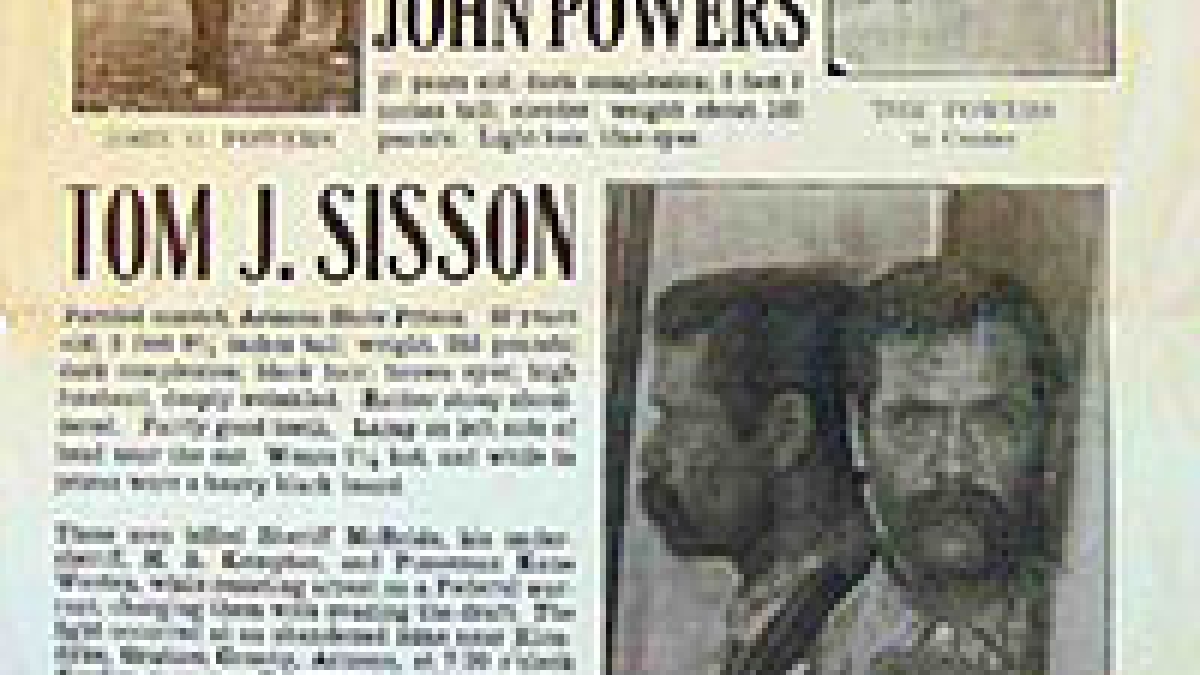Alum uncovers secrets behind Powers Cabin Shootout in documentary

It began with the dodging of the draft and ended with the largest manhunt in Arizona history, claiming the lives of four men in the process. Known as the deadliest gunfight in Arizona since the shootout at the O.K. Corral, the details of Powers Cabin Shootout continue to mystify historians today.
The story begins when the Powers family moved from Texas to the Galiuro Mountains near Klondyke, Ariz. to mine an old gold mine nearby in Klegberg Canyon. By 1918 the United States had entered World War I and all able bodies were called to enlist in the draft. Jeff Powers, the father, convinced his sons Tom and John to dodge the draft. The illegal move prompted the local sheriff’s department and federal government to rally their troops and stage an ambush on the Powers family cabin that resulted in the death of four men, three being law enforcement.
When the lawmen realized they were losing the fight, they retreated. The Powers brothers fled to Mexico with a family friend named Tom Sisson, only to be caught a month later after the largest search party in the state’s history was assembled.
While the story itself is widely told, Arizona State University alumni Cameron Trejo took it upon himself to try and find answers to the details surrounding the shootout. Why did the events play out as they did? Why did the violence escalate so quickly? These questions – and more – are still unclear to many historians in Arizona, but with the help of Trejo’s new documentary, “The Power Shootout,” many details have been uncovered.
“I started to poke around a bit and feel out the energy behind the story. I spoke with descendants of those involved and historians, and also went to the Arizona Historical Society to do research,” said Trejo, a Mesa, Ariz. native.
As he became immersed in the research, Trejo began to understand what might have happened that February morning. He believes that the lawmen probably did not want to trek up to the Powers' cabin but were strong-armed by the federal government who took charge of the case since it involved the draft.
Trejo says that local authorities were also interested in speaking with the family about the mysterious death of Jeff Powers’ daughter Ola May. According to his research, the coroner did not list a cause of death for Ola, nor were Tom and John allowed to attend her funeral.
“No one knows anything about her death. Jeff Powers said she died of food poisoning but everybody began to speculate otherwise. My team is trying to get her body exhumed in an effort to maybe find some answers,” he said.
ASU professor and star of the show History Detectives, Eduardo Pagán, is just one of the people who contributed to the documentary. He feels that the events may have sprung from a miscommunication between the Powers family and the police.
“From the perspective of the Powers family, they were obstinate against the draft and felt they didn’t do anything wrong. One day they wake up and there are armed men surrounding their cabin,” he said.
“Looking at it from a law enforcement side, these guys were draft ditchers, which was illegal. In the 20th century it was common practice for police to expect resistance and have the mentality of shoot first and maybe ask questions later,” he said.
Regardless of which side viewers align with, Trejo says the story itself tells the rich history of Arizona’s Wild West and of the U.S. during the time of the 20th century.
While a large portion of the interviews is filmed, the independent project is still in need of funding for scene recreations and quality imagery. Anyone wishing to view the trailer or donate may do so here.
Trejo hopes that the documentary will eventually be turned into a feature length film. He says that Thomas Cobb, author of Crazy Heart, has already expressed interest in the idea.

